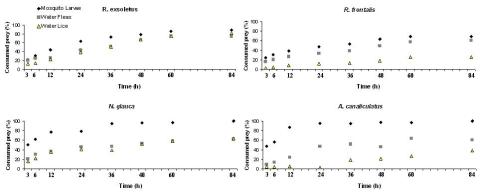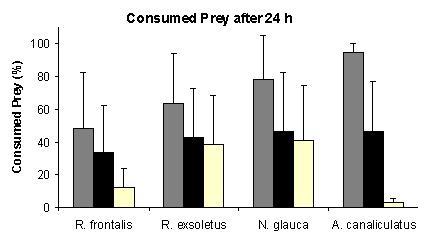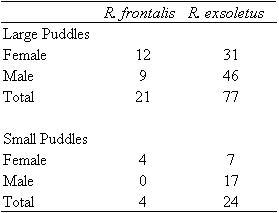Results
Cafeteria Experiment

On average all the predator species consumed consistently more mosquito larvae than the other prey types. Least preferred were the isopods.The Kruskal-Wallis test showed that the predators consumed significantly different amounts of the prey types (H = 8.35-15.20 and p≤0.05). However, when making pairwise comparisons the only significant difference was that Rhantus frontalis consumed more mosquito larvae than isopods (p≤0.05, q = 3.88). The number of Acilius canaliculatus was so low (four specimens) that statistical analyses could not be made for that species.
| cell 1 | cell 2 |
| cell 3 | cell 4 |

The bar graph above shows that there were high standard deviations in the predators' consumption of prey. Notonecta glauca and A. canaliculatus consumed more mosquito larvae than the Rhantus species (see the bar graph). Rhantus exsoletus and N. glauca consumed more isopods than the other predators. Between the R. exsoletus and R. frontalis this difference was significant (p≤0,01).
Immigration Experiment
Only R. exsoletus and R. frontalis immigrated into the puddles (see table below). Most of them immigrated into the large ones but all the puddles were immigrated into by at least one R. exsoletus or R. frontalis in total during the time I trapped predators. The differences in number of immigrated beetles between large and small puddles were significant (p=0.0045 for R. frontalis and p= 0.0008 for R. exsoletus). There was no trend in how many female or male beetles which had immigrated to the puddles.
The number of beetles which immigrated into the puddles

Responsible for this page:
Director of undergraduate studies Biology
Last updated:
05/29/13
